What is the appropriate style of cup or glass to enjoy sake? Most people are familiar with drinking sake in small porcelain cups but few are yet aware that sake may be enjoyed in a number of different kinds of vessels. From traditional to modern, sake is most typically enjoyed in the following:
SAKAZUKI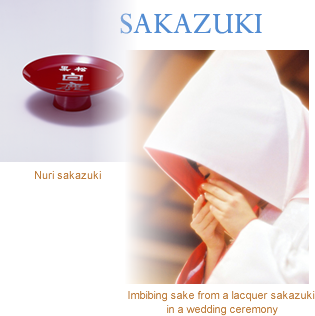
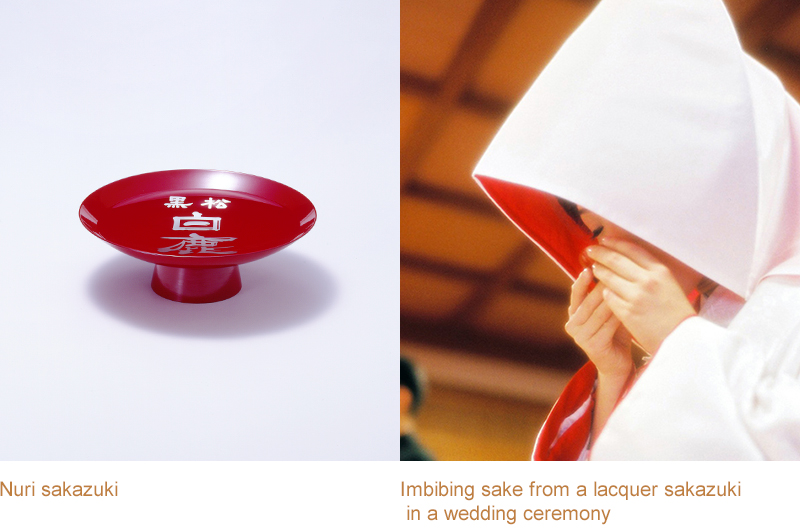
The oldest sake cup style, the wide-mouthed sakazuki continues to be the ceremonial favorite. Shallow but dramatic, this cup is most formally lifted to the mouth with two hands: one to hold the bottom of the cup and the other to hold it on the side. Available in a number of sizes from the most minute to a large showpiece, the sakazuki most typically holds only a few sips. Sakazuki are often beautifully decorated and usually made from porcelain, earthenware or lacquer but some are available also in gold, silver and glass.
When using sakazuki, it is common to pour for the other person and to reciprocally accept another person's offer to pour. This form of etiquette is a form of empathy to express not only hospitality but also understanding of the needs and enjoyment of others.
GUINOMI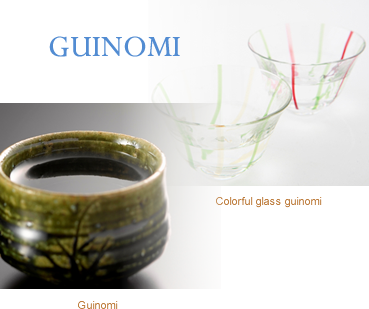
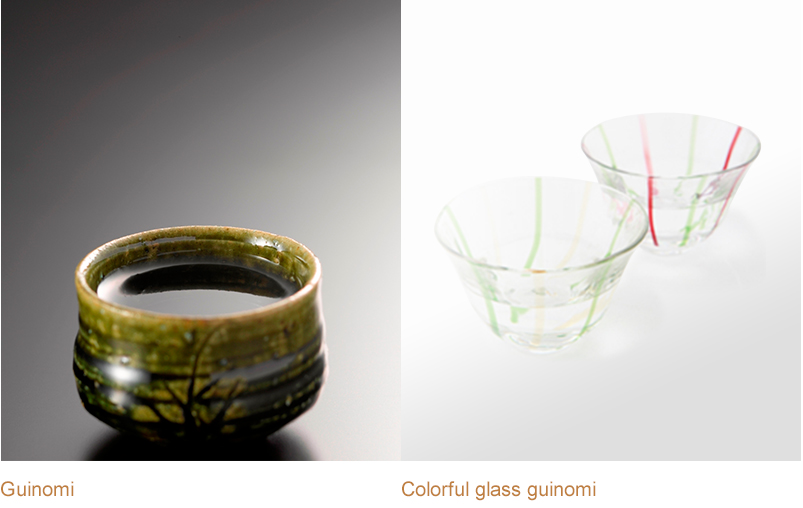
These days, this cup is most often rather small in shape. However, when the cup was first popularized in the middle part of the Edo Period (1603-1868) the guinomi typically held more sake than the sakazuki and were thus appreciated as a less formal way to enjoy sake. Guinomi are most often made of porcelain and earthenware. Ceramic producers throughout Japan produce a wide range of beautiful guinomi from the elegant and colorful Kyoyaki makers of Kyoto to the rustic and natural colored Tamba makers in Hyogo. Guinomi are also available today in glass and are often used to enjoy chilled sake in the warm summer months.
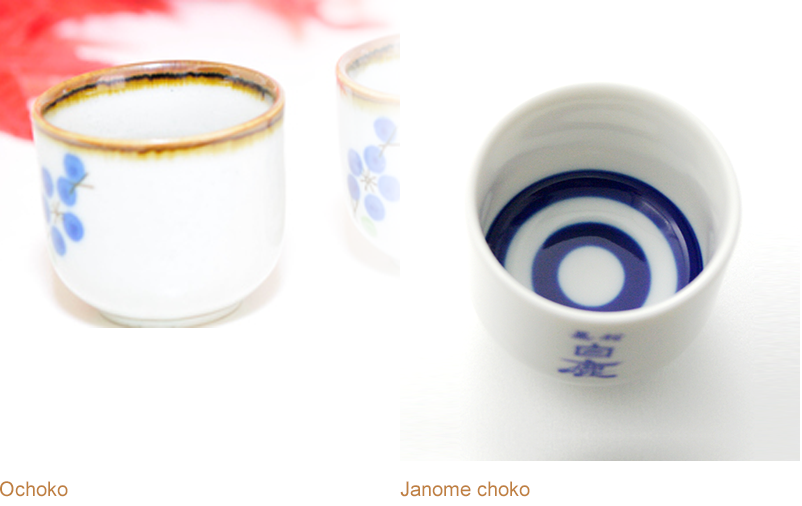
In the modern sense of the term, "ochoko" is largely interchangeable with the term "guinomi." In the strictest sense, however, ochoko are generally smaller than guinomi and are often in a thimble-like shape.
Sake producers use a special large ochoko called "janome choko" (also known as kikichoko which has a concentric blue and white design on the bottom of the inside of the cup. The color pattern facilitates the examination of the sake's color and clearness and the cup's wide mouth allows for the sake's fragrance to be evaluated.
With the exception of the special janome ochoko used in professional sake evaluations, the traditional etiquette for the ochoko, like the sakazuki, is to pour for others and to accept reciprocal offers of sake. In many situations today, however, it has become more acceptable to pour for oneself in order to make a party or group gathering less formal and to allow people to enjoy sake at their own pace.
MASU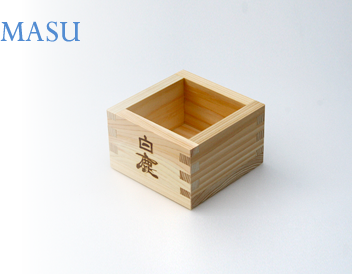
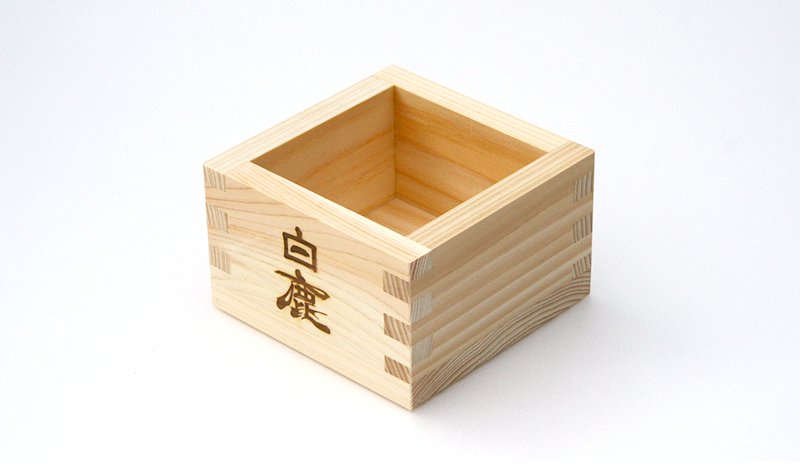
The origins of the masu go back centuries. The masu, however, was not originally used as a drinking cup but rather as a tool for measurement. In the Edo Period (1603-1868), the square box-like masu were used by merchants to measure for sale such important commodities as rice and other grains as well as soy sauce, vinegar and sake. Difficult to break and able to hold a large amount, the masu later became a popular cup for enjoying sake at festivals, cherry blossom viewing "hanami" and other outdoor events. The masu also became popular for serving at drinking establishments since the pronunciation of "masu" is the same as the word for "increase." This play on words showed not only the proprietor's generosity but also a sense of fairness since the masu itself was typically a tool for proper measurement.
Today, masu are often used for serving sake at sake barrel ceremonies "kagami biraki" and at traditional Japanese pubs "izakaya" that appeal to the customer's sense of nostalgia or "Japanese-ness." Arguably the best masu for enjoying the combination of the flavor of sake with the aroma of the wood are those made from Japanese cypress "hinoki" (Chamaecyparis obtusa). Pleasant in color, texture and fragrance, hinoki masu can give sake an uncomparablely fresh and unique quality.
Masu vary in size but the two most common sizes used for enjoying sake are the 144ml "hasshaku" masu and the 180ml "ichigo" masu.
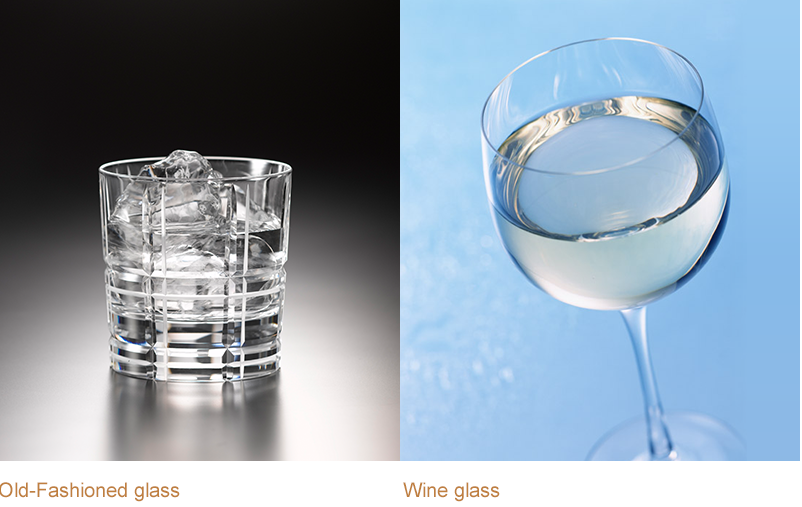
Although it may be novel or interesting to drink sake from traditional drinking vessels, it is perfectly fine and sometimes even recommended to enjoy sake from glass or crystal ware. While the sakazuki, guinomi, ochoko and masu can provide a wonderfully authentic atmosphere, to enjoy the fragrance of the sake itself, a deeper glass with a wider mouth is recommended to better catch the subtleties. A white wine glass is particularly suitable for enjoying the more fragrant premium ginjo and daiginjo sake types. Genshu, which is excellent served over ice, may be likewise enjoyed in an "Old-Fashioned" glass.
